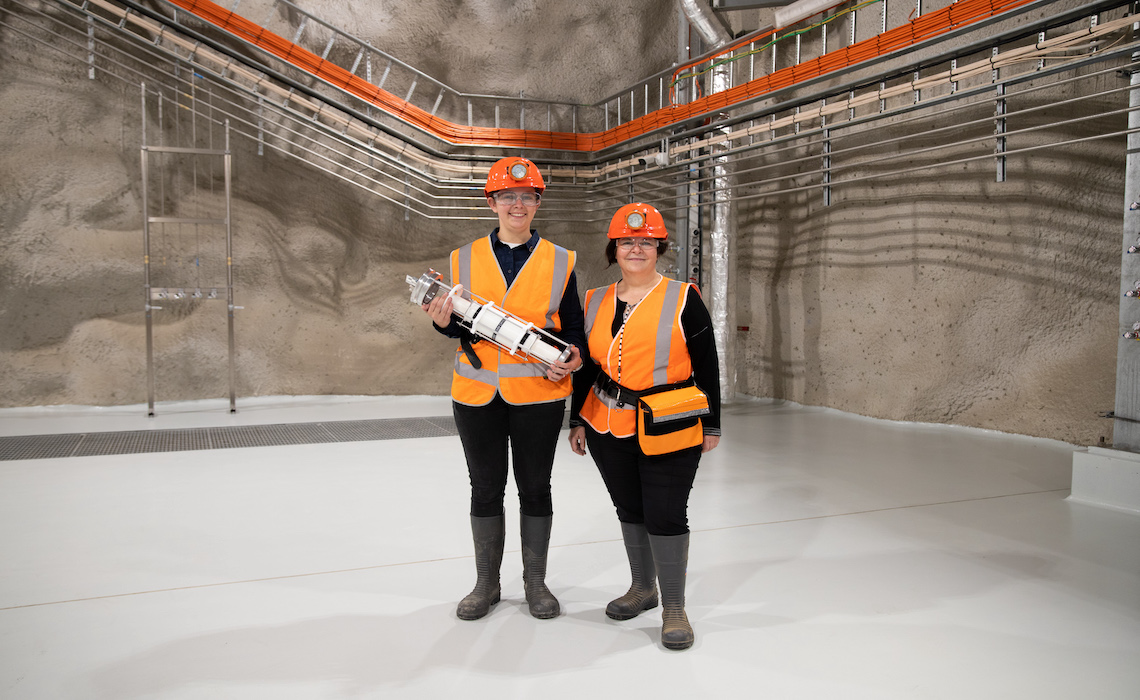AARNet, Australia’s national research and education network, connects scientific instruments and research facilities across Australia, extending the network infrastructure to new sites, such as the laboratory that is set to be the epicentre data matter research.
In August 2022, the Stawell Underground Physics Laboratory (SUPL), a cutting-edge research facility located near the town of Stawell in regional Victoria, Australia was officially unveiled to the world. The laboratory is situated about 230 kilometres northwest of Melbourne and is built in an old gold mine that has been transformed into a state-of-the-art underground research facility. SUPL is operated by a consortium of universities (University of Melbourne and University of Adelaide, Swinburne University, Australian National University) and Australian Nuclear Science and Technology Organisation (ANSTO).
Scalable high bandwidth network
AARNet built fibre out to the site to provide the underground laboratory with the scalable high-bandwidth network it needs for conducting research in the data-intensive field of underground physics. Network services are configured to easily scale to 100Gbps and beyond to support the laboratory’s research now and into the future.
Research at SUPL is primarily focused on the search for rare events as a possible signal of dark particles that are difficult to detect above ground. The laboratory is located at a depth of approximately 1,000 metres below the surface, which helps to shield it from cosmic ray background radiation that can interfere with sensitive experiments.
Specialised scientific equipment
The laboratory is equipped with a range of specialised equipment, including detectors that can detect and measure low-energy particles such as neutrinos and dark matter. These detectors are housed in specially designed shielding systems that protect them from environmental sources of background radiation.
In the future, SUPL may host a range of research projects, including the study of neutrinos and the decay of radioactive isotopes. These experiments are aimed at understanding the fundamental properties of matter and the universe and have the potential to make important contributions to a range of fields, including particle physics, astrophysics, and cosmology.
International collaboration
One of the key research programs at the SUPL is the SABRE (Sodium Iodide with Active Background Rejection Experiment) experiment, which aims to detect dark matter particles using highly sensitive detectors. The experiment is a collaboration between the University of Melbourne, University of Adelaide, Swinburne University, Australian National University, the Italian National Institute for Nuclear Physics, and the University of Zaragoza in Spain. These institutions all rely on the powerful research and education networks in their respective countries for moving data around, namely AARNet (Australia), GARR (Italy) and RedIRIS (Spain).
With its advanced research network, cutting-edge equipment and expert researchers, as well as the support of the site owner Stawell Gold Mines, the Stawell Underground Physics Laboratory is well-positioned to make significant contributions to the understanding of the fundamental properties of matter and the universe.
This story was first published in the AARNet 2022 Annual Report
Image: University of Melbourne PhD student Madeleine Zurowski with lead researcher Professor Elisabetta Barberio in the Stawell Underground Physics Lab. Photo: Olivia Gumienny







